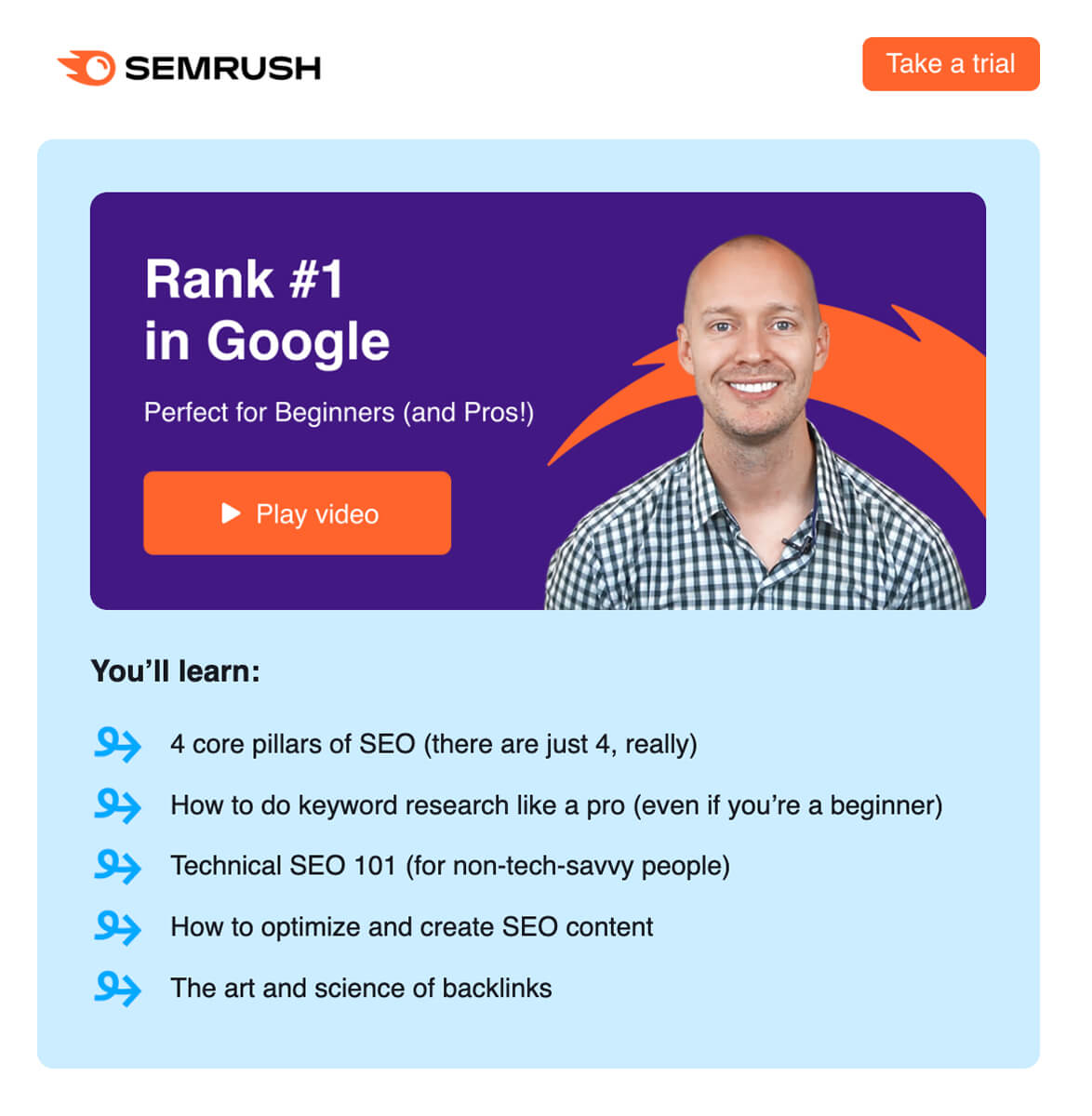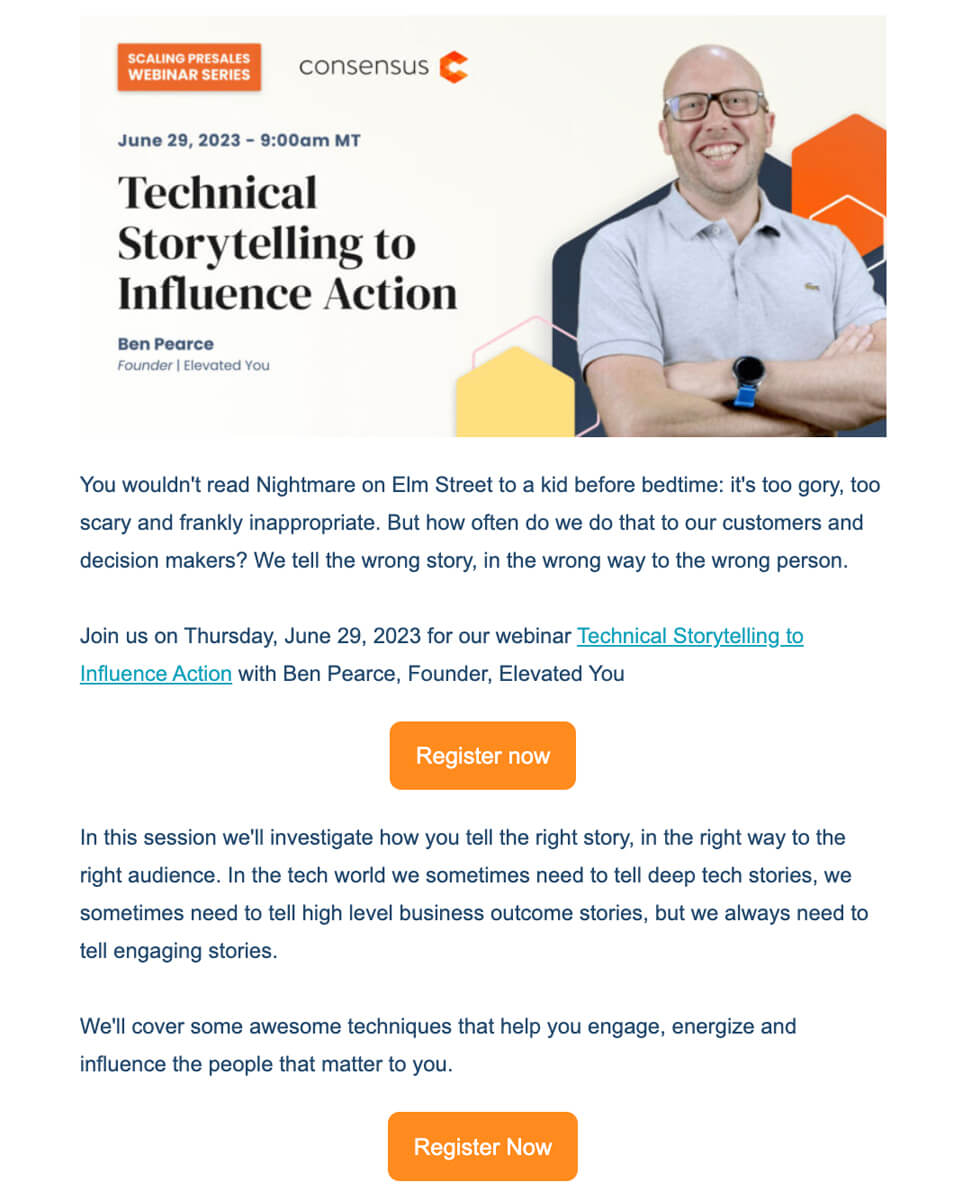-
News & Trends -
Sales -
Marketing Related Topics -
B2B Software Guides Related Topics -
Free Tools & Resources -
- About Us About Us


Lead nurturing strategies are methods that salespeople use to strengthen their relationships with generated leads and get them closer to a sale. There are different tactics that can be used in a sales process at any given time. The goal of these strategies is to make your leads comfortable with you and your solution, and thus confident in moving forward in completing the sale.
Lead nurturing strategies help salespeople build on the relationships they’ve formed with qualified leads as they progress in their buyer’s journey. Each strategy works to prove to and remind the lead of the value your product or service can provide. Effective lead nurturing requires cross-channel or multi-channel communication. Because of that, the top lead nurturing methods help you strategically engage with leads through multiple outlets and opportunities.
Some of the most successful lead nurturing strategies include:
Deciding which strategy, or strategies, to implement can be a trial-and-error process and take time. A nurturing strategy you used to engage with leads in the past may not be as effective now — this can be due to changes in your lead's attitudes or your competition advancing their own strategies. No matter what industry or type of solution you sell, customize each strategy to fit the scope of your business and the needs of your specific clientele.
Matching the right strategies to your nurturing stages ensures your brand is constantly top of mind for the leads and provides healthy engagement cadence criteria. The use of set strategies improves your leads' experience with your business and helps sellers automate their nurturing process, identify valuable leads, and get key insight into how to sell to them. All of this gets both you and your lead warmed up and ready to close the sale.
There are different types of sales activities to consider implementing into your lead nurturing process. Depending on your nurturing stages and your business type, one or several of these strategies can help your leads feel much more confident in pursuing your product or service. Check out these six strategies below for inspiration on how to engage with your top qualified leads.
As leads move through your pipeline and show more interest in your solution, questions and objections will come up. As the lead’s guide, be available for a quick call the day you receive an email, text, or call from the lead. Your responsiveness and objection handling skills will prove your dedication to the lead, emphasizing why they should trust you.
These are the primary types of objections you can expect:
Make yourself readily available and regularly check emails and other communication channels to see if your leads have asked anything or shown signs of hesitation. That, and having honest and insightful answers to their questions, builds your reputation as a trusted advisor. This’ll help you be seen as an expert in their eyes.
Check out our article on objection handling where we give you the top rebuttal techniques for those objection types, examples, and tips when facing client objections or hesitations.
Email nurturing campaigns are a series of automated emails sent to leads as they move through your pipeline. Typically triggered by a specific action taken by the lead, they’re meant to warm up leads and influence them to eventually buy your solution. They’re a trust-building marketing tactic that can also go on in the background while sellers are enacting their nurturing process.
The standard steps to set up an email campaign are:
The goal of your email nurturing campaign doesn’t have to be the lead making a purchase outright. It could be for them to schedule a free demo, start a trial, or schedule a meeting with a sales rep, which are all lead nurturing stages.
If you’d like to learn about this strategy, we’ve written an article on how to set up an email nurturing campaign plus examples, tips, and tools.
Interacting with leads on social media platforms is an easy way to keep your brand top of mind and nurture them through your pipeline. Every time you like, reply to, or engage with one of your lead’s posts on LinkedIn, Twitter, or other platforms, the lead becomes more familiar with you. These pings can be casual but still valuable for the lead.
Here are some ways to nurture leads over social media:
Since social media is constantly evolving and content is regularly churned out, social nurturing requires consistency in how often you engage with the lead. Some sales reps dedicate 30 minutes a day to engaging with their leads on social media. A little bit of thoughtfulness, while still maintaining professional boundaries, can really make an impact on a lead’s perception of you.
Create and share company branded content that relates to a lead’s interests through email, SMS, or however you regularly communicate with leads. This can be blogs, videos, case studies, or templates. Refer to your notes about the lead and make educated guesses to decide what content is appropriate. Sending content like an industry report will increase their knowledge about your business and make them confident when it’s time to make a purchase.
If your target audience is interested in SEO, you might email them a video like Semrush does in the example below:

The content you choose to share should correspond to the stage of the buyer journey your lead is in. For example, a lead you just gave a live product demo to would appreciate a white paper on a feature they expressed interest in, while a newer lead would benefit more from an article describing a pain point they mentioned to your company and the main ways to solve it.
Lead nurturing software is usually standard CRM software that specifically helps sellers qualify and engage with leads in an effort to turn them into clients. Typically performing some marketing functionalities as well, this software tracks and guides leads that have been scored and qualified through the sales funnel through automated engagement.
The best lead nurturing software are:
All of these software offer a host of special features that support their ideal use cases. No matter which one you go with, all lead nurturing software should offer a select few key features. This includes account and pipeline management to organize and manage your leads’ information and where they are in your sales process. There’s also lead scoring functionality that ranks leads based on predefined criteria and activity tracking to record touchpoints and engagement.
For more on the above platforms and other top tools, check out our guide on the best lead nurturing software. There you’ll find the pricing, use cases, and features of each platform to help you pick the best one for your business.
No matter what stage of your nurturing process your leads are currently in, they’ll appreciate an invitation to one of your company’s events. Events to consider extending invites to can be something big, like an industry conference and charity fundraiser, or smaller, like a webinar and your booth at a trade show. Engaging with leads in an environment outside of your typical meetings or touchpoints is a great opportunity to build on your relationship.
Below, Consensus invites leads to an online webinar with a branded invitation and link to their registration page:

It’s not just the feeling of camaraderie from these events that’ll help move leads through your pipeline. Inviting leads to these events serves as an opportunity for them to learn more about your company and the problems your solution solves. This’ll build your leads' comfortability and confidence when purchasing from you.
If any of these strategies seem appealing to you and you feel they’d resonate well with your target audience, give them a try to see how receptive your leads are. Next, we’ll walk through some of the benefits you’ll see as a result of using a lead nurturing strategy.
Choosing and implementing a distinct lead nurturing strategy, or strategies, into your sales process can be beneficial to both your experience as a seller as well as your client’s experience. This includes increasing your brand awareness and reputation, promoting timely engagement and communication, helping you clearly identify interested leads, and allowing for helpful automation.
Using any of these lead strategies ensures your leads will have your solution and brand top of mind as they progress through the interest, evaluation, and decision stages of your sales funnel. Depending on how long your lead nurturing process typically takes, some leads might lose interest or forget about your solution if you don’t stay on their radar, and these strategies minimize that possibility.
Establishing lead nurturing strategies in your lead nurturing stages helps build out parameters around when, why, and how you engage with your leads. This ensures that each lead is experiencing both regular and timely communication from your brand and builds a healthy reputation for consistency.
When you regularly engage with your leads, you’re able to scope out and segment leads by their level of interest or readiness to buy. Using the multiple channels of communication or touch points through any of these strategies, you’ll have more opportunities to talk about each lead’s focus, priorities, or pain points and provide personalized solutions and answers.
Building out your sales process with defined strategies and methods for you and other salespeople to follow doesn’t have to consist of tiresome manual labor. You can engage and nurture your leads with little effort on your part, like creating an automated email campaign with specific triggers or using nurturing software and tools that do the hard work for you.
Using a lead nurturing strategy can offer many benefits to both you and your leads as long as you build and implement them appropriately. This requires you to put yourself in your lead’s shoes and consider what style of touchpoint and cadence is most fitting and relevant.
Adopting any one or multiple of these lead nurturing strategies will help you get your leads that much closer to buying your offering. The six strategies we’ve introduced can be customized and adapted to your industry or solution to help you cater to the exact needs of your leads. And now that you’ve got the tools to nurture your leads and build their confidence in your solution, check out our article on sales pitches to learn how to create and deliver a pitch to drive the sale home.


Allyssa is a sales writer with a background in B2B sales and account management. After earning her degree in English and communications, she spent her selling career supporting Fortune 1000 IT and finance companies including Bank of America, Wells Fargo, and Credit Karma. As a staff writer for Selling Signals, her specialties include lead nurturing, lead generation, and sales software topics. When she's not writing or updating articles, you can find Allyssa writing poetry, traveling, or picking up any new creative hobby.

Selling Signals delivers actionable advice for sales and marketing professionals. Learn strategies that help you hit targets, strengthen customer relationships, and win more business. Get expert advice on lead generation, sales processes, CRM software, sales management, and account management directly to your inbox.
Property of TechnologyAdvice. © 2025 TechnologyAdvice. All Rights Reserved
Advertiser Disclosure: Some of the products that appear on this site are from companies from which TechnologyAdvice receives compensation. This compensation may impact how and where products appear on this site including, for example, the order in which they appear. TechnologyAdvice does not include all companies or all types of products available in the marketplace.